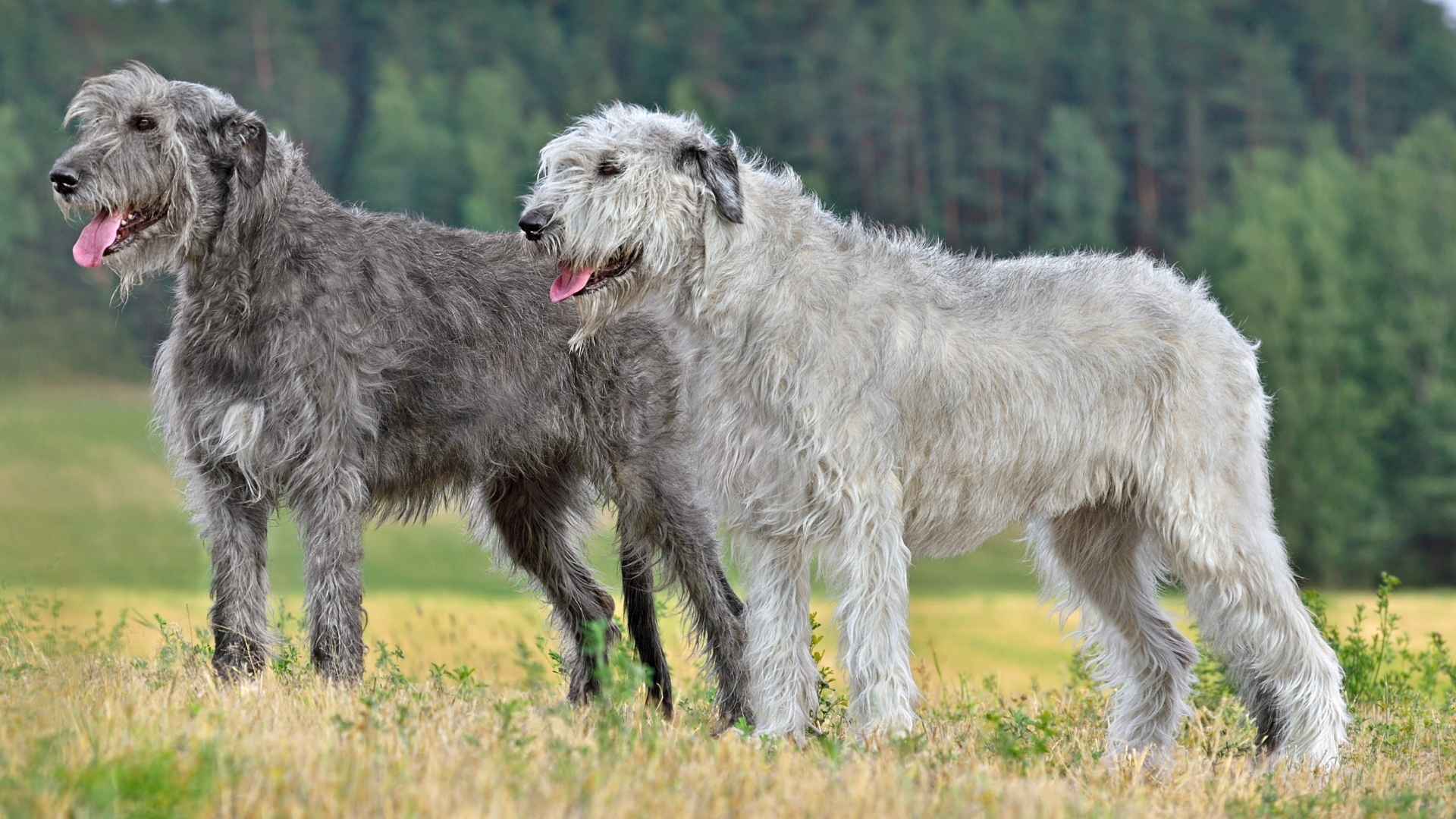Ever dreamed of cuddling a dog that feels more like hugging a friendly bear? Giant dog breeds might look intimidating at first, but beneath all that muscle and fluff lies a heart full of love, loyalty, and endless affection. These gentle giants are proof that sometimes, the bigger the dog, the bigger the love.
However, bringing one home isn’t just about falling for their oversized charm. Large breeds need plenty of room to stretch out, extra food to fuel their big bodies, and daily exercise to stay happy and healthy. Their sheer size also means training is essential, and yes, vet bills and upkeep can be pricier than with smaller pups.
If you’re ready for a companion who will take up both your couch and your heart, these enormous dog breeds might be the perfect fit. Let’s meet some of the most impressive gentle giants you’ll ever come across!
Enormous Dog Breeds
1. Irish Wolfhound
Irish wolfhounds have the unique distinction of being the tallest recognized dog breed, with some reaching over 32 inches in height, as per the AKC. It was originally bred as a big-game hunter. Moreover, they are known to be both affectionate and protective, and they’ve been around since the 15th century.
Hip dysplasia and life-threatening GDV are some of the health issues faced by Irish Wolfhounds, as they are prone to health problems. Moreover, their life expectancy ranges from 6–8 years. They respond best to training that uses positive reinforcement and tend to have sensitive personalities.
These giant breeds get along wonderfully with kids. Additionally, make sure you have adequate space for these biggest dog breeds in your home. Because of their size, they’re not the right pet for every family.
2. Saint Bernard
Saint Bernard is known as the friendly giant of the Swiss Alps. These giant breeds are nonetheless among the world’s most famous and beloved breeds. They are great with families and kids, as they are big furry balls of affection. But originally bred for avalanche search-and-rescue missions.
According to PetMD, they enjoy digging due to their history as rescue dogs. So, keep an eye on them when they’re outdoors. They do drool and shed a lot, but that is well balanced by the fact that they really aren’t known to bark a lot.
Especially with children, Saint Bernards are gentle dogs and tolerant. They can be used as a watchdog; however, they don’t fawn over strangers.
3. Great Dane
Great Danes are sweet and friendly, despite their imposing size. They are also very loyal and alert guardians of their homes and families. Moreover, the black-and-white “harlequin” coloring is perhaps the most iconic, although they come in lots of colors.
These large breeds are truly great in size, so it’s not hard to see how Great Danes earned their title. However, as the breed has no connection to Denmark, how they got the “Dane” part of their name is a little hazy.
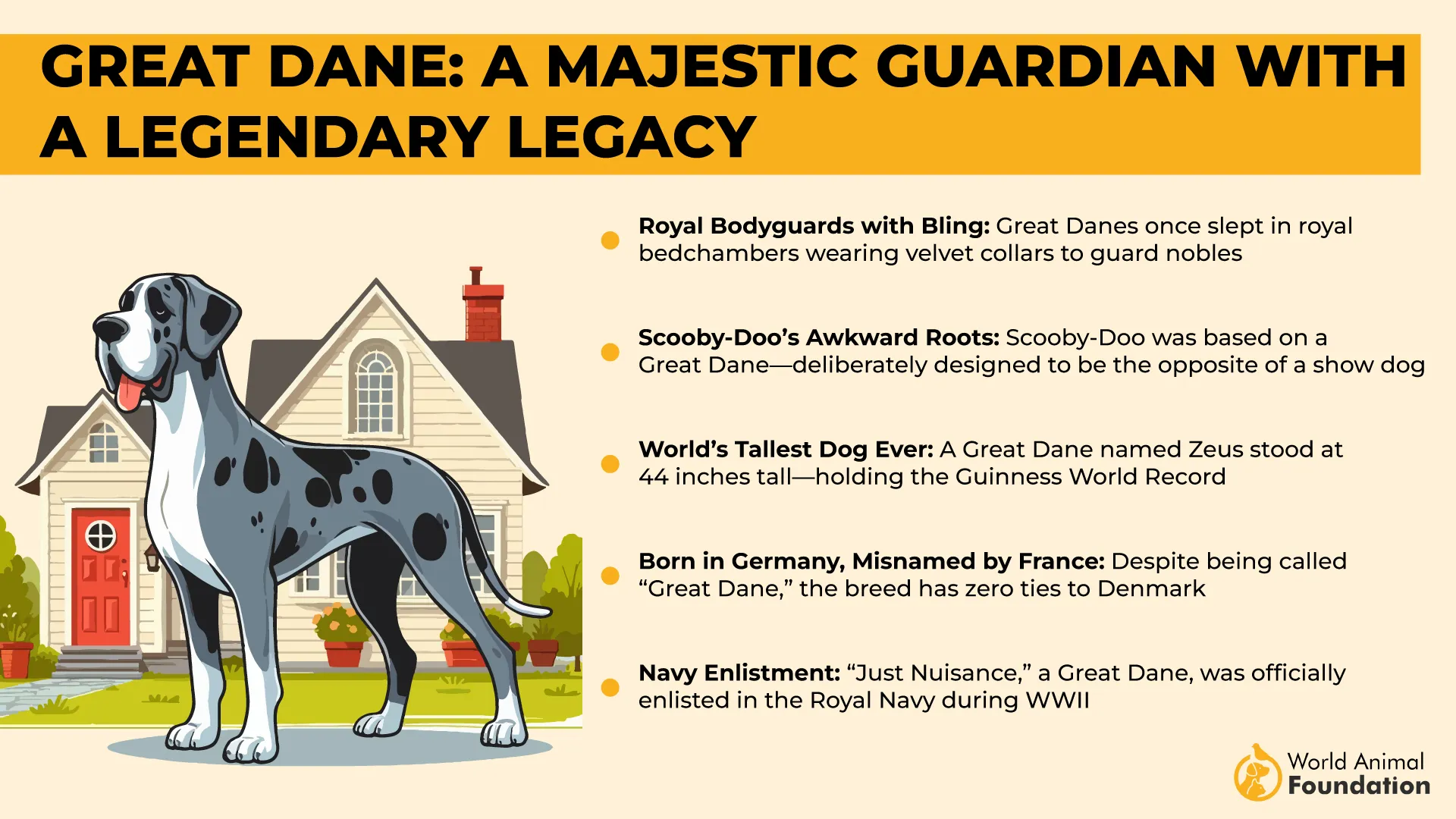
Working as hunters and guardians, these largest dog breeds were bred in Germany. One of the biggest dog breeds in the world, the Great Dane, tends to be quiet and gentle. But they require plenty of space to get enough exercise.
4. Leonberger
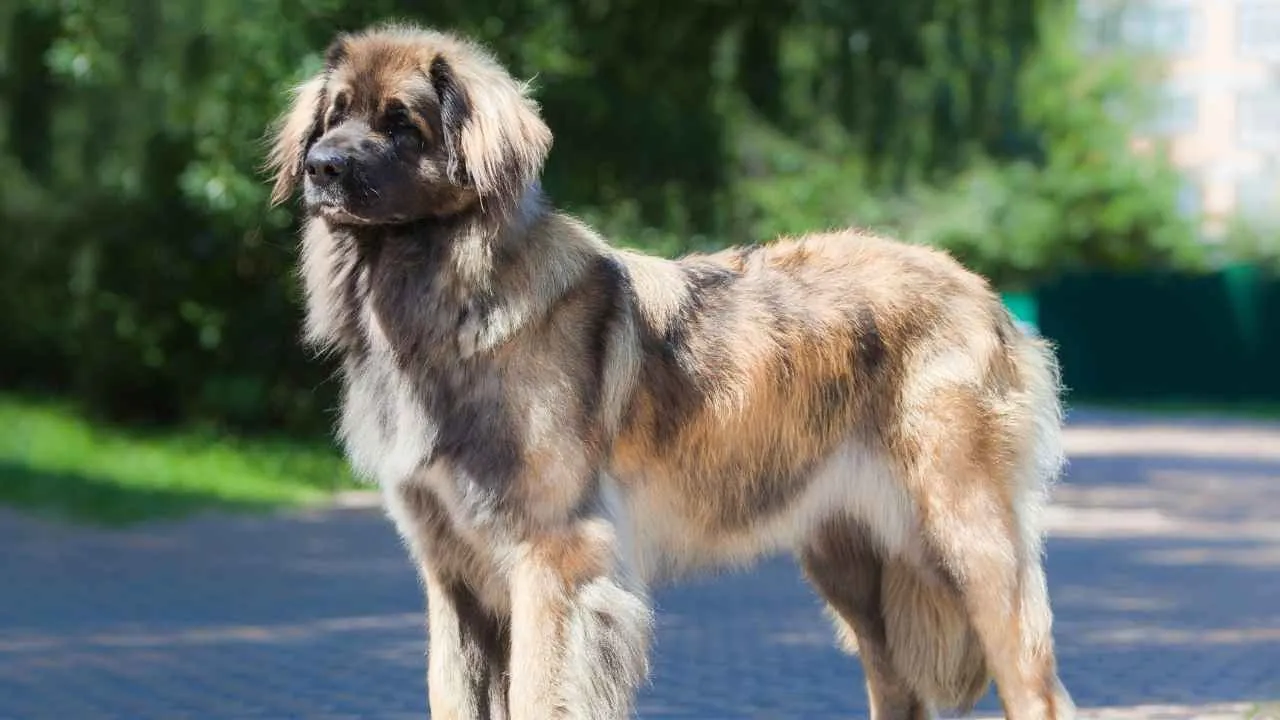
Leonbergers have a medium-long waterproof coat, beautiful triangular ears, a bushy tail, and a black facemask that frames dark-brown eyes. These features are considered brand trademarks.
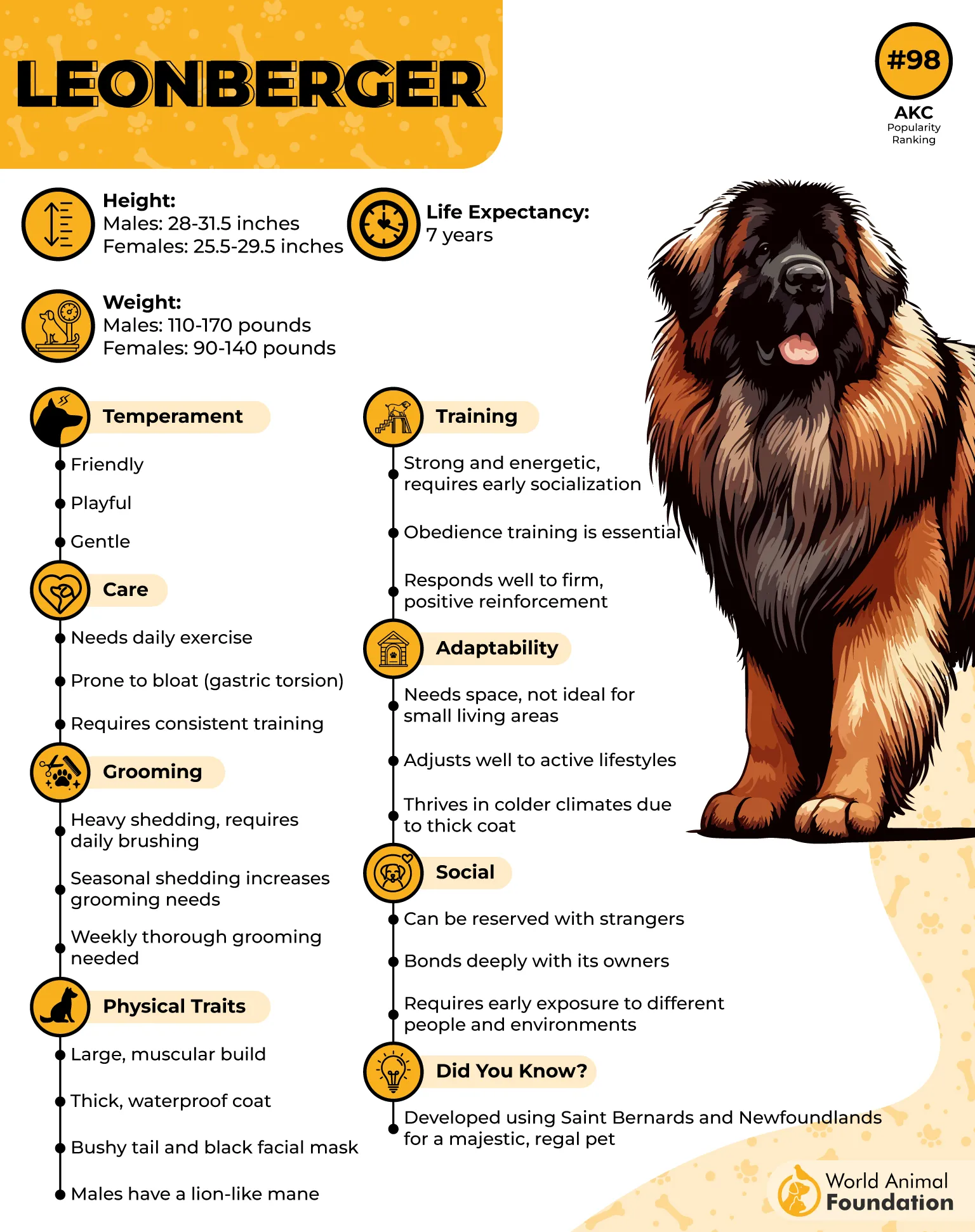
With their reddish-gold coat and a striking black mask, the Leonberger is one of the most glamorous giant breeds. To accommodate this magnificent creature, pet parents would need a big home. They weigh an average of 140 pounds and stand around 31 inches tall.
Moreover, it is a muscular working dog that likes having a job to focus on. Additionally, it’s a sexually dimorphic breed. That means male Leonbergers look different than females.
Irrespective of gender, they are prone to joint problems and heart disease, and they have a life expectancy of around 7 years. They are not lapdogs, but these sweet companions have the potential to be excellent therapy dogs.
5. Mastiff
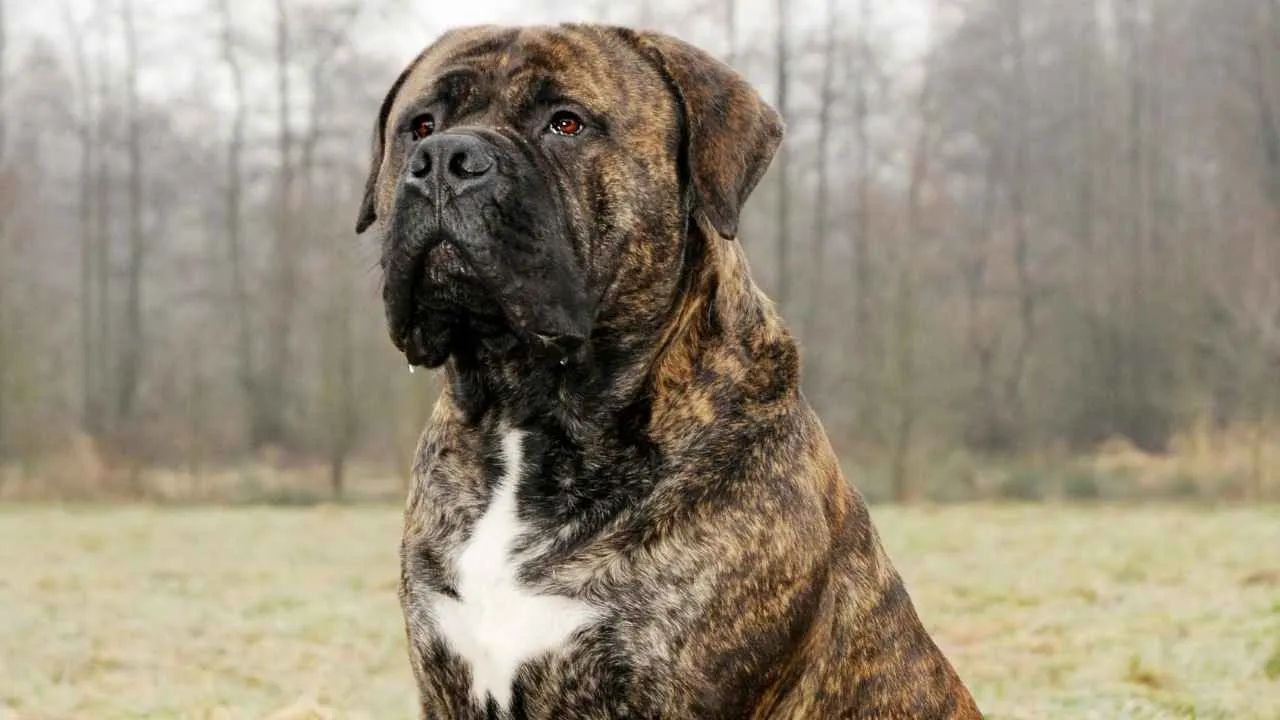
The American Kennel Club breed standard recognizes that they are often a taller breed, with males, on average, coming in at around 30 inches in height. In terms of both height and weight, the Mastiff is among the biggest dog breeds alive today, according to Purina.
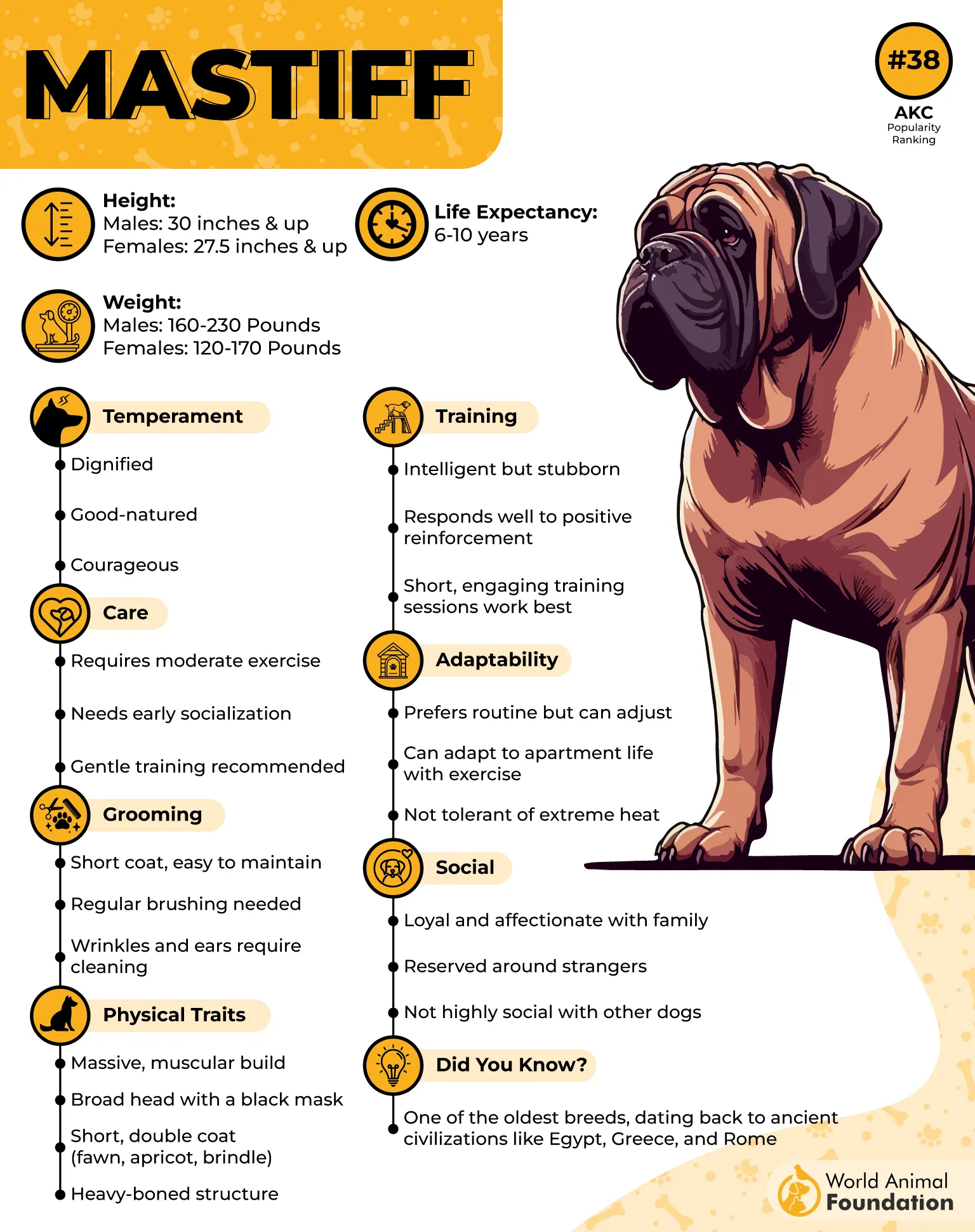
People often think of them as a lap dog, but the Mastiff is a calm, gentle, and noble dog that is devoted and loving towards their family. They are, however, indifferent or even suspicious of strangers; human or canine.
Also known as Old English Mastiffs, their low energy levels mean they are content with staying home with you all day. However, they’ll learn to befriend new people with early socialization and consistent training.
The Mastiff is willing to please as soon as it figures out what you want. Some tend to be shy, and they may react defensively if not socialized properly.
6. Newfoundland
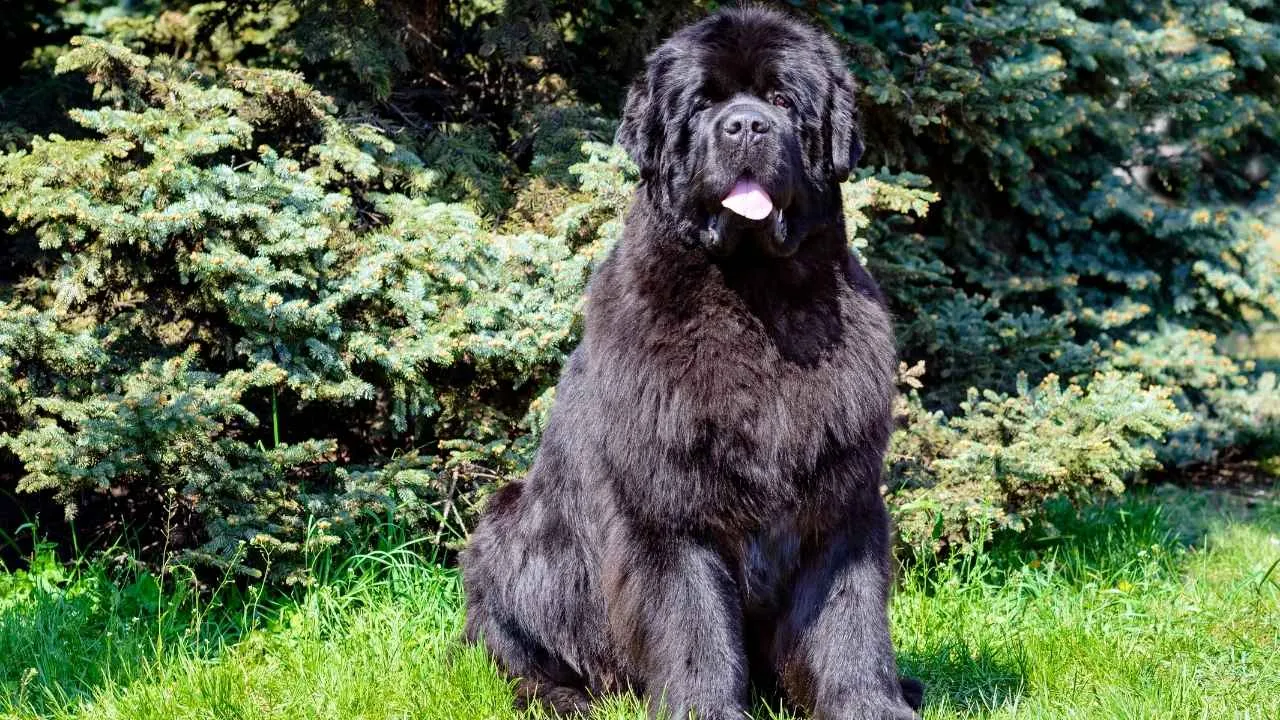
Particularly famous for their love of water, Newfoundlands or ‘Newfies’ are giant dogs. These giant dogs originated from the island of Newfoundland, Canada, where they worked as sled and cart dogs pulling heavy loads, and as water dogs, retrieving heavy nets from the water.
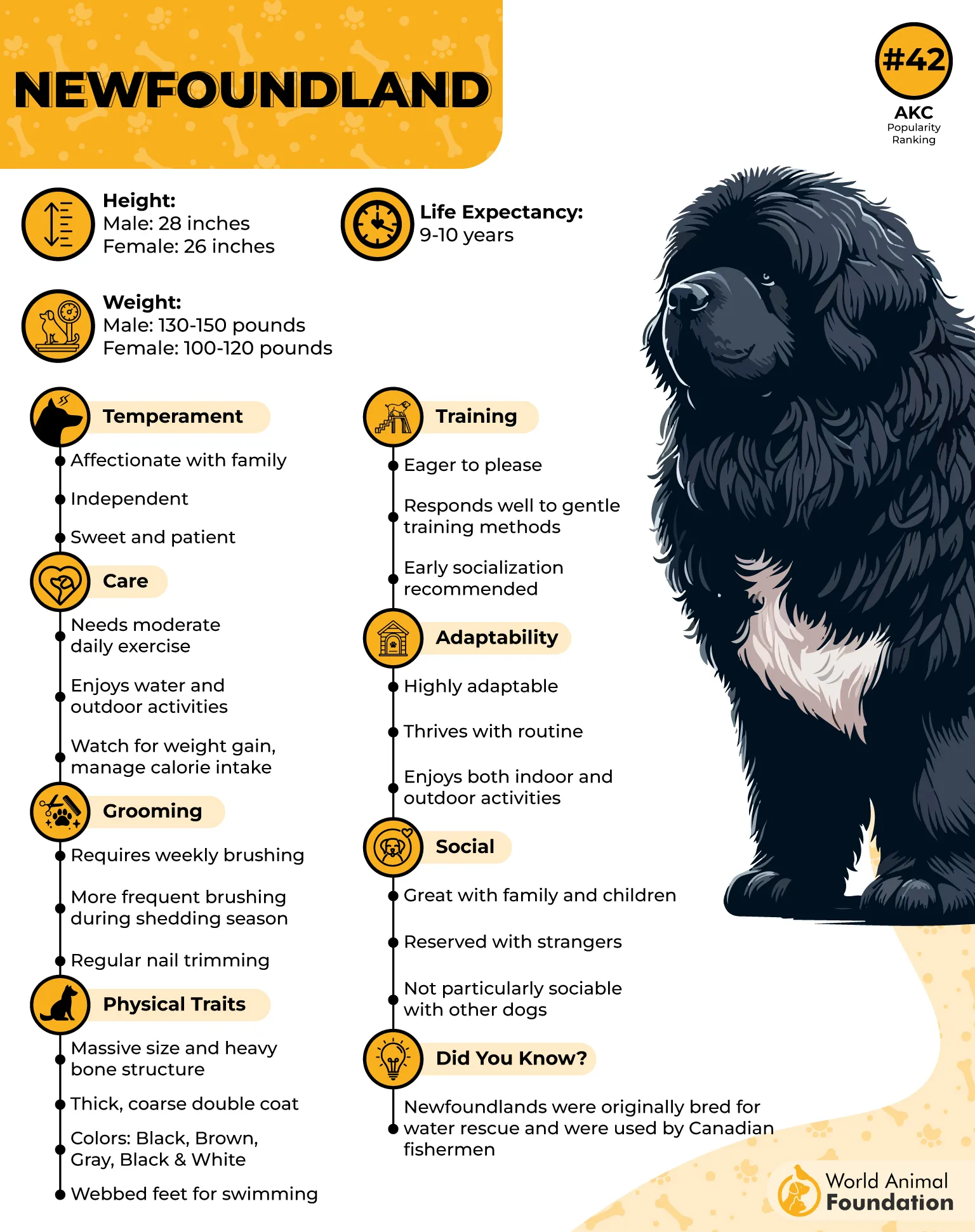
They are truly enormous dogs, as they weigh around 100-150 pounds and stand 26-28 inches at the shoulders. Moreover, they could survive extreme low temperatures and wind chill, even whilst wet, due to their heavy, oily, and weatherproof coat.
Additionally, they have great traction on wet, icy, slippery ground due to their webbed feet, which made them effective swimmers.
7. Bernese Mountain Dog
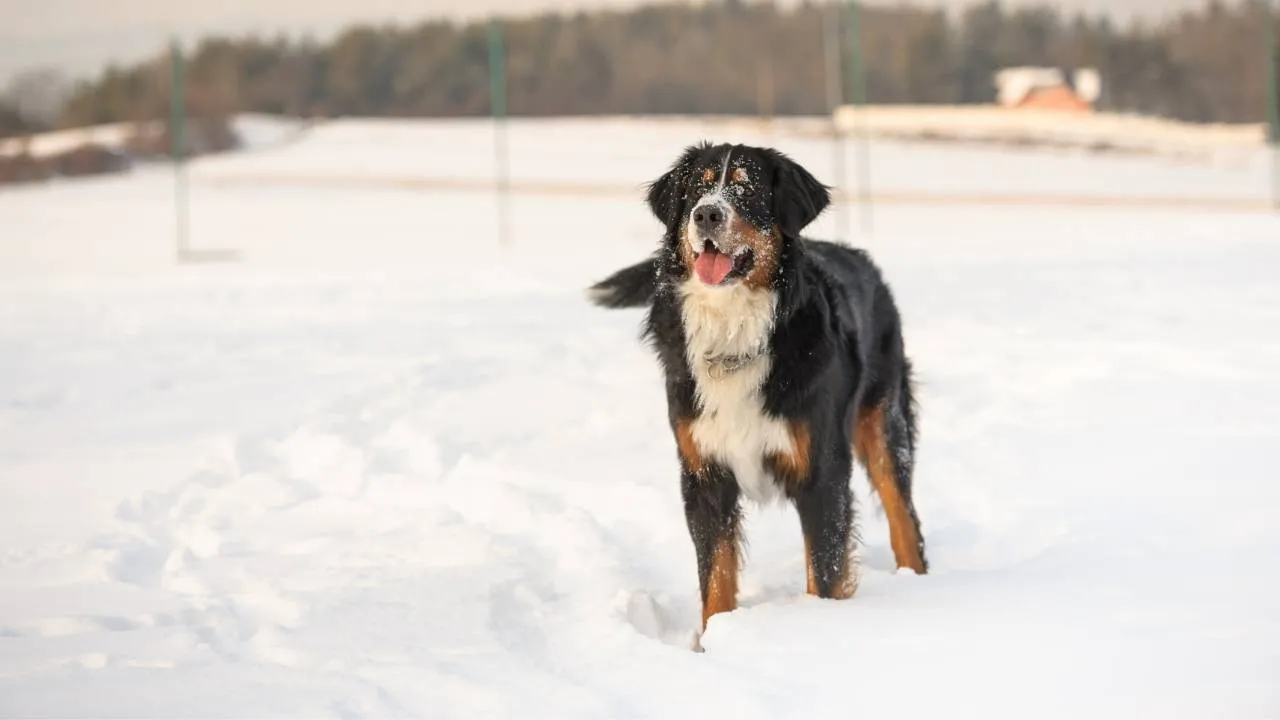
Bernese Mountain Dogs are big dogs with even bigger hearts. They were bred in Switzerland and brought to the US as farm dogs; these affectionate pups are now mostly family pets.
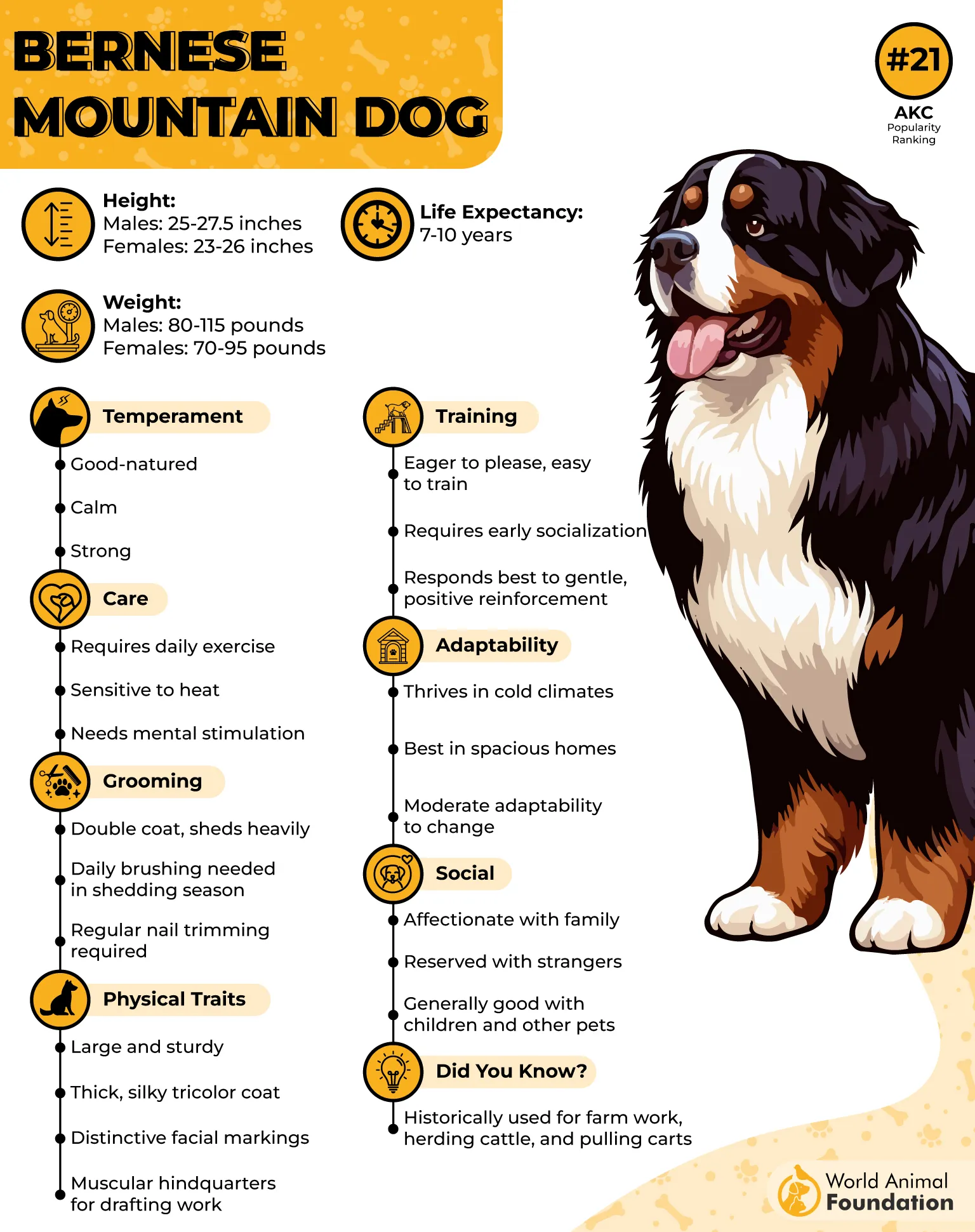
They were developed as hard-working, versatile dogs for farms and excel at drafting or carting. Known for their good-natured temperament, these giant dogs are popular companions and family dogs.
This majestic breed thrives in cold climates, like their native Swiss Alps, due to having a fluffy, thick double coat that provides insulation.
Moreover, early leash training and recall are important to teach in puppyhood. This breed loves to hike with its favorite people.
Conclusion
Owning a large dog can be more expensive, and a potential pet parent should be prepared to spend more on everything from food to living, to boarding costs, to daily exercise. Medical costs can also be higher. So, keep these factors in mind before adoption.
Moreover, with the proper care and training, any of these giant breeds could become a loving member of your family. These are affectionate, large dogs that provide you with all the love that you deserve.


